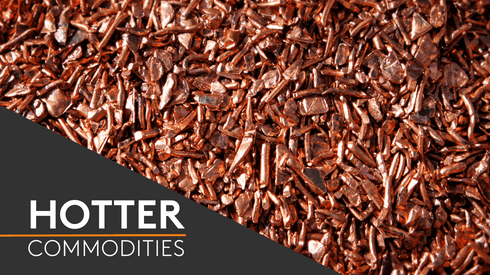Where next for cobalt prices?
Cobalt prices have dropped from their multi-year highs in recent weeks, and top of the agenda will be where they are heading next. After seven months of steady increase, spot trade has slowed ahead of the conference, where delegates expect to find clarity on market direction. Benchmark low-grade cobalt prices assessed by Metal Bulletin stand at $42.85-43.85 per lb, in-warehouse, down from their April highs of $43.70-44.45 per lb, but nonetheless up from $24.10-26 per lb at the time of last year’s conference. Some market participants told Metal Bulletin they expect to see prices in the $30s over the summer, while others, citing bullish demand fundamentals, anticipate $45 per lb before the end of the year.
How can sulfate producers navigate high payables?
Rising raw materials costs amid weak buying interest have heaped a lot of pressure on Chinese cobalt sulfate producers. Percentage payables against Metal Bulletin’s low-grade cobalt price assessment stand at over 88%, while Chinese ex-works cobalt sulfate price was assessed at a discount of $0.82-1.13 per lb against Metal Bulletin low-grade low end price at 20.5% Co basis on May 18, compared with a premium of $0.01-0.32 per lb on April 11. Some Chinese producers are now trying to reduce high raw materials costs by adopting cobalt scraps in refining or holding back from sales while their margins remain squeezed.
Where will the Glencore-Gertler dispute leave supplies?
Greater competition among sellers for spot cobalt sales has so far not been enough to offset the possible bullish impact of legal action against Glencore by Dan Gertler. But legal claims by the mining magnate and Glencore’s former partner in the Democratic Republic of Congo (DRC) could threaten cobalt supplies from Mutanda Mining and Kamoto Copper Co going forward. Glencore expects to produce about 39,000 tonnes of cobalt across its operations in 2018, up from 27,400 tonnes in 2017, largely on the ramp-up of operations at Katanga (operated by KCC) in the DRC. Legal proceedings so far have included freezing orders against both copper-cobalt mines, though courts in London have provided temporary injunctive relief.
What will consumers pay to secure a clean supply chain?
Ethical sourcing remains a key concern for end-users, and as a result, for the producers and traders supplying their material (or who might provide their much-needed feed in the future). That concern is all the more pressing in a cobalt market that is still incredibly tight, but the complexity of guaranteeing artisan-free units and demonstrating their provenance ensures lively discussions over long-term supply agreements over the coming days.
Can technology help guarantee ethical sourcing?
With cobalt in the spotlight, and continuing to face mainstream scrutiny, the space is open to set the standard on ethical sourcing and responsible supply chains. Some are looking at where technology can fit in. Circulor is spearheading the use of blockchain to track electric vehicle components and raw materials from mine to end-use; the immutable technology provides a digital record of transactions, and is being mooted as the verification of sourcing that buyers are after. Canada-based exploration and development company Cobalt Blockchain too is working with its partners to establish a blockchain platform which will provide greater certainty of provenance and further assurance that all minerals procured are ethically sourced.




